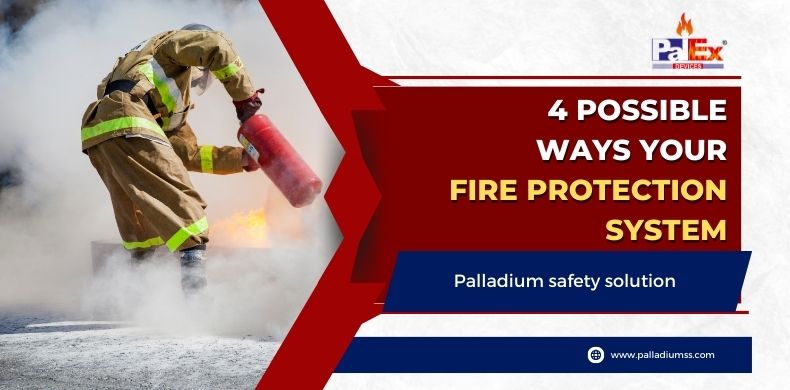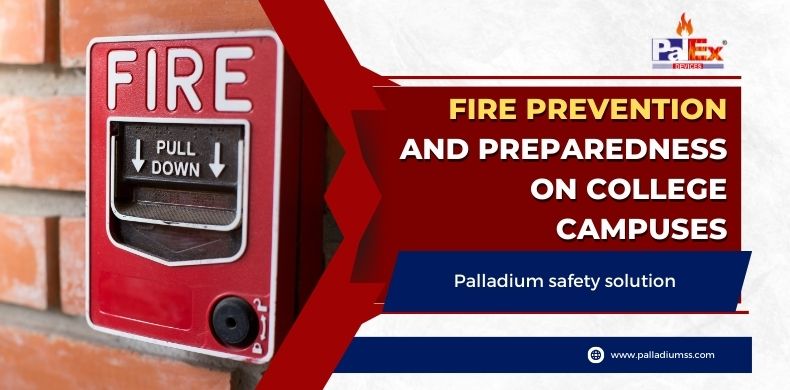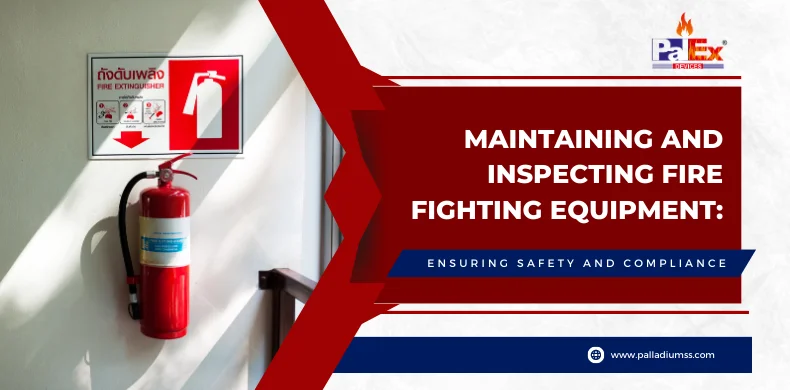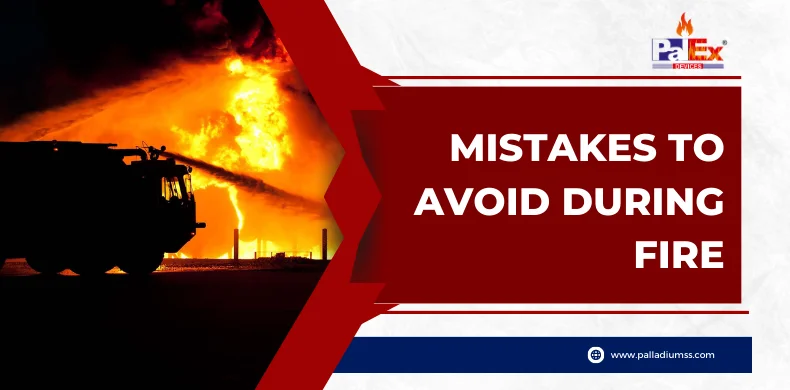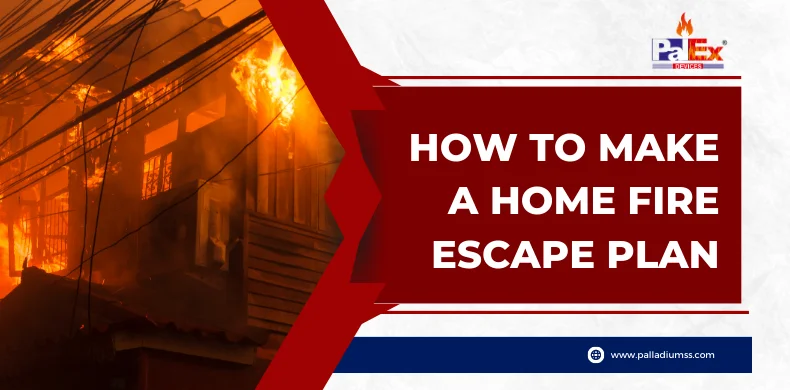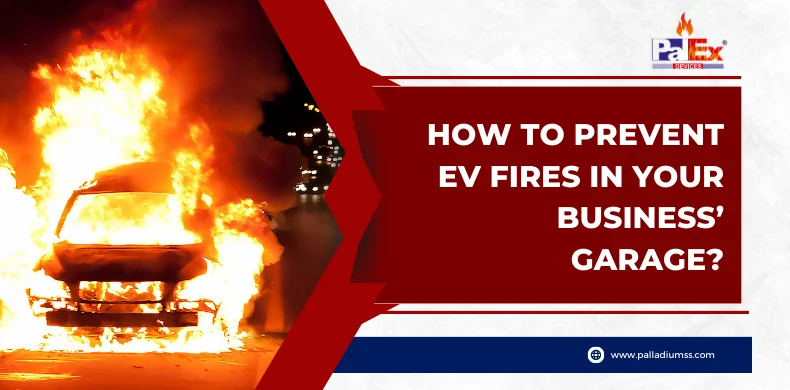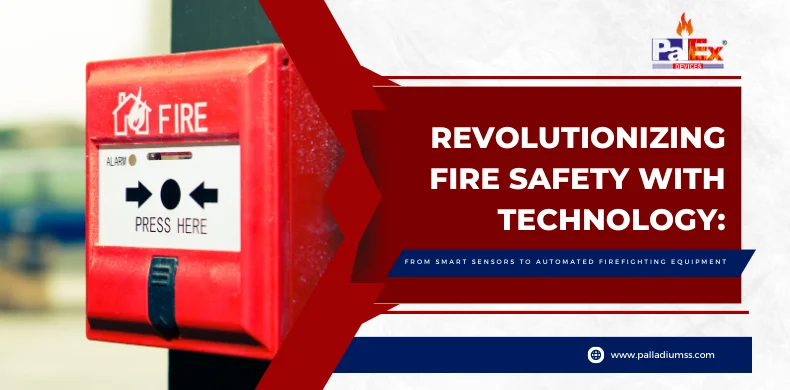This blog has discussed various reasons why property managers should hire, install equipment, and work with professional fire protection companies like Palladium Safety Solutions on their property.
Fire Protection Companies are Experts in their Field
When it comes to fire safety, you want to ensure that you’re working with a company that knows what they’re doing. Fire protection companies are experts in their field and can help you choose the right fire safety equipment for your home or business. They can also help you create a fire safety plan to keep your family safe in the event of a fire.
Fire Protection Companies can Help you Save Money
Installing fire safety equipment in your home or business can be costly. However, working with a fire protection company can help you save money. Fire protection companies often offer discounts on their products and services and can also help you save money on your fire safety plan.
Fire Protection Companies Offer Peace of Mind
When you work with a fire protection company, you can rest assured that your family is safe in the event of a fire. Fire protection companies offer a variety of services that can help you protect your home and family from fire. You can also feel confident that your property complies with fire codes and that your fire safety plan is up to date.
Fire Protection Companies Can Help You Get Started
If you’re unsure where to start regarding fire safety, a fire protection company can help you get started. They can help you choose the right fire safety equipment for your home or business and can help you create a fire safety plan. Once you have the basics in place, you can start working on more advanced fire safety concepts.
Protect Various Diverse Industries
Fire protection companies don’t just work with homeowners. They protect various other industries like schools, healthcare facilities, prisons, factories, and many others.
Fire Protection is an Investment
Although the upfront cost of working with a fire protection company can be expensive, it’s important to remember that fire safety is an investment. By installing the proper fire safety equipment and creating a fire safety plan, you’re protecting your home or business from a potentially disastrous event.Also read :Fire Partners of Evil
Conclusion
Fire protection is a serious matter and should not be taken lightly. For peace of mind and a sense of satisfaction, Property managers should consider hiring, installing equipment, and working with professional fire protection companies like Palladium Safety Solutions to ensure the safety of their property, tenants, and employees, and they offer discounts they provide. Working with a fire protection company is an investment that will pay off in the long run.4 Possible Ways Your Fire Protection System
Introduction
The foremost step in preventing a fire related accident is always staying prepared. A place that is well-equipped for preventing and managing a fire will always have the upper-hand in case a fire really does happen. Continue reading “4 Possible Ways Your Fire Protection System”
Fire Prevention and Preparedness on College Campuses
Fire misfortune is a national misfortune. There are several fires in dormitories, sororities, fraternities, and off-campus housing that lead to the loss of many lives and property. With diverse activities that happen on a college campus from classes to community events, from living to the gathering, and more, many aspects of fire and life safety need to be addressed.
Also Read: Here Are Some Fire Safety Tips After You’ve Purchased a New Home.
Here are some aspects that every campus should address to safeguard lives and property.
- Fire Alarms: Fire alarms are the most important and essential part of a full fire protection system. Whether you continue with maintenance or installing new fire alarm systems like the 16 zone Fire Alarm Panel, without it you can never think about fire safety.
- Fire Alarm Monitoring: Correct timing is everything in case of any emergency. A good fire alarm monitoring system can give a fast response during an emergency so that precautionary steps can be adopted to minimize the damage.
- Emergency Exit Lighting: During an emergency, emergency exit lighting helps in safeguarding people to escape from the building.
- Fire Extinguishers: Installing and maintaining fire extinguishers is not enough, train the employees and students on how to use them so that they can use them in case of any emergency. Install from a reputed fire extinguisher manufacturer.
- Fire Sprinklers: Fire sprinklers are the best fire suppression system. They restrict the fire to spread and can easily control small fires. Different types of sprinklers can be used particular places.
- Kitchen fire suppression: Following safety codes and installing proper fire prevention and suppression systems in cafeterias, Mess, and other commercial kitchens on the campus help to protect fire incidents.
- Special Hazard system: Some places on campus require additional safety and security like a server room, science labs, library, museum or quality artifacts, academics section, and others. These places require more water sprinklers, fire extinguishers, and fire alarms and they should be maintained properly. So to protect these assets of the campus, special hazard systems need to be installed.
- Design and practice evacuation plans: Evacuation practices can help save lives although it may seem unnecessary to busy staff and students at first. The action plan that is required to have:
- A method for reporting fires.
- An evacuation policy and procedure.
- Routes assignments and Escape procedures, such as floor plans, workplace maps.
- Names, titles, departments, and telephone numbers of individuals both within and outside your campus to contact for additional information or explanation of duties and responsibilities under the emergency plan.
- Procedures for employees who remain to extinguish fires or perform other essential services.
- Rescue and medical duties must be assigned to special workers.
- Creating fire drills will properly prepare staff and students for any emergency
Maintaining and Inspecting Fire Fighting Equipment: Ensuring Safety and Compliance
Firefighters and people’s safety depend on taking care of firefighting gear. To be prepared for crises, all instruments and equipment like hoses, spouts, pumps, and protective caps have to be working appropriately. It’s really important to comply with the rules and do things the correct way when taking care of firefighting equipment. In case you get ready for your gear sometime recently in a crisis, you’ll make beyond any doubt it’s secure to use. This will lower the chance of getting harmed or damaging things, and can indeed spare lives. In this article, we are going into conversation almost ways to check and look out for your firefighting adapt so merely are prepared for any circumstance.
- Follow the Manufacturer’s Recommendations: Do what the maker suggests to keep and check firefighting gear. This means checking things often, doing normal upkeep, and putting in new parts if they are old or broken.
- Conduct Regular Inspections: It’s important to check firefighting equipment once a month to keep it in good condition. This means checking hoses, nozzles, valves, and other parts to see if they are old, damaged or rusty.
- Keep Records: Make a list of everything you check and fix on fire equipment. Keep the list safe. This helps find problems that happen again and makes sure all machines follow the rules.
- Replace Worn or Damaged Parts:If any part is old or broken, change it right away. This will make sure that the equipment works well in an emergency. This means things like tubes, squirters, switches, and other parts.
- Test Equipment Regularly: Make sure to check firefighting equipment often to be sure it works correctly. This involves checking if pumps, hoses, nozzles, and other parts are working correctly and if they are allowing the right amount of liquid or gas to pass through.
- Clean and Dry Equipment: Make sure to clean and dry the firefighting equipment after each time you use it so that it doesn’t rust or break. This means parts like hoses, nozzles, valves, and other pieces.
- Train Personnel: Teach everyone how to take care of and check firefighting tools correctly. This means keeping equipment in the right place, making it clean and using it carefully.
Stay on Track and Avoid Costly Mistakes with Compliance Guidelines
- Follow All Local, State, and Federal Regulations: Make sure you obey all the rules of the government. Check that all firefighting gear is made and taken care of correctly, according to the government’s rules.
- Conduct Annual Inspections:It’s important to check and fix all the firefighting equipment every year like pumps, hoses, nozzles and other important parts, to be ready in case of a fire.
- Use Certified Technicians: You must use approved workers who are experts when fixing firefighting tools and doing the upkeep. Their skills make sure that the equipment is taken good care of, lowering the chances and making sure it works great in emergencies.
- Document Compliance: Keep a written record of all the times you checked and fixed firefighting equipment to follow the rules.
- Conduct Training: Regular training for all personnel on proper maintenance and inspection procedures for firefighting equipment is crucial for readiness in emergencies. This ensures that everyone knows how to use the equipment correctly and that it is in good working order.
On the off chance that you are doing what you’ve gathered and take after the rules, you’ll make beyond doubt that your firefighting hardware is in great shape and checked regularly. This will make it beyond doubt that everybody is secure when there’s a fire.
Also read :Do Not Keep Your Fire Escape Plans a Secret
Conclusion
Each piece of firefighting hardware plays a vital part in keeping individuals secure. By taking after compliance rules and best hones, you’ll be able to guarantee that your gear is in the best shape and prepared to utilize in a crisis. From conducting standard reviews and utilizing certified specialists to keeping records and conducting regular training, there are many steps you’ll be able to take to preserve and review firefighting gear. By doing so, you’ll guarantee that your hardware is continuously in great working arrange and prepared for activity. Keep in mind, remaining on track with compliance rules is fundamental for ensuring your commerce and keeping everybody secure.
Mistakes to Avoid During Fire
Introduction
Fire can burst out anytime, at any place with even very small mistakes. To tackle such a situation is quite difficult. In this panic situation, people generally take some wrong decisions that are harmful to them as well as their fellow beings.Here are some mistakes that we have to avoid when fire burst out.
Continue reading “Mistakes to Avoid During Fire”
How to Make a Home Fire Escape Plan
A fire evacuation plan can give you peace of mind knowing that you have a plan in place in an emergency. Many resources are available to help you create a fire emergency evacuation plan. Once you have created your fire escape plan, practice it with your family, so everyone knows what to do during a fire.
Here are some tips by Palladium Safety Solutions you can implement and execute during an execution plan.
Some Tips on How to Make and Execute a Home Fire Escape Plan
Fires are one of the most common and deadly disasters that can strike a home. While modern homes are built with many safety features to help prevent fires from starting and contain them, if they do, there is still a risk.
Tip 1: Draw a Floor Plan For Your Home
Easy Fire Safety Drawing will help you know your home’s layout and where all the exits are located. It is also a good idea to mark where windows and doors are located.
Tip 2: Choose Two Escape Routes From Each Room
You should have at least two ways to escape from each room in your home. You will have a backup if one route is blocked by fire or smoke.
Tip 3: Choose a Meeting Place Outside
Once you have escaped the home, meeting at a designated spot outside is essential. This will help you account for everyone and ensure everyone is safe.
Tip 4: Practice Your Plan With All Members of Your Household
This is especially important for young children. Everyone should know what to do and where to go in the event of a fire. Practice makes perfect. Everyone knows now what to do when an emergency strikes. A hire fire exit plan is essential to keeping you and your family safe in the event of a fire. By following these tips, you can ensure that you are prepared for anything.
Tip 5: Keep A Copy Of Your Plan In A Convenient Location
Make sure everyone in your household knows where the plan is kept. In an emergency, time is of the essence, and you don’t want to waste any time looking for a plan.
Tip 6: Review And Update Your Plan Regularly
Your home fire escape plan should not be a static document. As your family and your home change, so should your plan. Reviewing and updating your plan regularly will ensure that it is always up-to-date and reflects the current layout of your home. A home fire evacuation plan is critical to keeping your family safe in the event of a fire.
Tip 7: Make Sure Everyone should Know About Emergency Number
This is a lifesaver for you and your family; if anyone in your home sees the fire first, they immediately contact the emergency number to send help as soon as possible to decrease the loss of your belongings.
Tip 8: Everyone Should Have An Idea of Fire Fighting Equipments Maintained
There is one thing you keep in mind that keeps fire fighting equipment like hose reel drums, hose box, sprinklers, and hydrant valve maintained adequately. one more thing, always keep in mind that everyone should know how to use that equipment.
Points To Remember to Make a Home Fire Emergency Evacuation Plan
There are several things to remember while making a fire emergency evacuation plan. All these points must be kept in mind, and the list is as follows:- Install smoke detectors and sprinklers on every level of your home and in every bedroom.
- Test your smoke detectors monthly and replace the batteries at least once a year.
- Keep a fire extinguisher in an easily accessible location.
- Never leave burning candles unattended.
- Never leave the kitchen while cooking.
- Don’t overload electrical outlets.
- Store flammable liquids in a cool, dry place.
All In All
Also read :Apartment Fireplace Safety Tips
Making and regularly practising a home fire escape plan is one of the best things you can do to protect your family in the event of a fire. By following the tips above, you can ensure that you are prepared for anything.
Need Fire Safety Guidance? Contact Palladium Safety Solution Now!
Palladium Safety Solutions is a fire safety company that can provide the guidance you need to ensure your home is safe from fire. We can provide you with a home fire exit plan, help you choose a suitable fire extinguisher, and more. Contact us today to learn more about our services!Need of Fire Safety in a Business Compliance
Fire safety is of paramount importance in any building. As a business owner, you are responsible for ensuring that your workplace meets all required health and safety standards. Your work environment must comply with all building regulations to ensure the safety of your employees and the protection of your building.
Fire safety should always be a major concern, no matter what type of business you run or the number of people working. Failure to do so may give your employees the wrong message, as it reflects them that their well-being at work is not always considered, and in some cases, can have disastrous effects in the event of an office fire.
A fire risk assessment should always be carried out by the responsible person with a written record of it if the company employs five or more people. To perform a fire assessment
The following steps must be taken:
- Identification of Potential Fire Hazards – Note anything that could easily cause a fire or combustion, if found during the assessment.
- Identification of People at Risk – Find out if the risk can be higher for some people (i.e., the disabled and the elderly are particularly at risk).
- Act on Results – Assess, reduce or eliminate potential risks.
- Record – Keep a record of results, prepare a contingency plan, and provide fire safety training.
- Review – A fire risk assessment should be carried out regularly with all results, updated, and recorded.
When you invest in a fire detection system and safety setup for your business, you are investing in people. It improves the health, safety, and well-being of the people associated with you and your company. A safe and healthy work environment is a basic social right. Protecting workers from occupational safety and health risks promotes goodwill besides being human.
Workers have the right to a work environment that suits their professional needs and allows them to prolong their participation in the labor market.In various fire safety audits, your organization’s fire control panel facilities and activities are evaluated. The prevailing risks and the level of prevention, protection, and emergency management preparedness like fire emergency light are also considered. And then you get a recommendation to update your security entries to avoid accidents and reduce consequences.
Also read :Causes of fire at workplace
Final reports recommend more efficient working methods and techniques. This contributes to a better work-life balance.
You can enhance personal safety through good practice and action. Compliance with rules and regulations. All procedures and controls in place. Accidents will never happen or at least there will be a decrease in the number of accidents. It will improve the morale of the employees. Thus, improving productivity will result in the betterment of the profits.
You will get easier insurance if all necessary systems are in place. After a frequent check is done, it will be easier to get fire insurance from several companies. Also, if a remote fire continues, it will be easier to claim compensation for losses.
How to Prevent EV Fires in Your Business Garage?
Why are Smoke Gases Harmful?
Every type of vehicle faces a similar type of vehicle fire. During the process of combustion, the plastic parts release toxic fumes and high temperatures. These days cars have a lot of plastic installed in them which increases the chances of a great fire than it was twenty years ago. In such cases, it gets difficult for the brigadier to extinguish the fire.Monitor Room Install Extinguishing System
Here, plant fire protection plays a major role. All the major extinguishing services should come in handy when the fire breaks. This will save you both money and time both. Along with it, it will also protect your buildings, business, garage, and assets. Property and garage owners should consider automatic extinguishing systems.Why do Batteries Catch Fire?
It is important to understand the reason why lithium-ion batteries are susceptible to fire. You must have heard people saying that this smartphone, laptop, the tablet has a lithium-ion battery installed in it but the batteries used in the EV are different from them. EV batteries have the potential to save three times more energy than phones or laptops. Along with it, they also have to withstand the abuse of extreme temperature, dust, humidity, and vibrations.Learn more about the Palex 6 zone detection system and how it can help you.
Now, if you want to increase the driving range of a vehicle needing high capacity. Flammable batteries are very vulnerable if the vehicles are being operated within confined spaces.
A Global Issue
Battery related fire is not an issue faced only in India but worldwide. With the rise in demand of the electric vehicle, the number of fire incidents has also risen considerably. The good news is that India’s AIS 156 standards provide protection from these fires. Also, it is up to the manufacturer to adhere to it. They can either side with AIS 048 or 156. 048 were recently updated to include the nail penetration test in full charge. Earlier full charging wasn’t made necessary. Businesses who were already using 048 continue running their business as usual.Water as an Extinguishing Agent
Water is a nice choice when it comes to extinguishing fires and especially while extinguishing electric vehicle fires. Also, a huge of amount is required to cool it down which in turn prevents thermal runaway which occurs when fire inside gets 10 times more aggravated because of sparks and tends to get out of control.
The fire brigade use a different and special equipment to cool down fires in such cases. In the electric cars, the batteries are located in the under body. The frames protect them from damage during the accident. So, sufficient water protects the cars and underground garages.
Also read :Evaluation Factors to Choose the Top Fire Protection Companies
Conclusion
The owners shouldn’t park defective cars of bikes in garages and only original charging cables should be used. The fire risk associated with electric vehicles and combustion vehicles is usually the same. They already have a Fire Safety Equipment installed that pre detects the problem with the hardware and shuts them down.A Quick History of Fire Fighting Equipment & the Characteristics of Different Types
Introduction to the History of Fire Fighting
Fire has been a continuous and ever-present threat to human civilisation. As long as homes and other structures were built of wood and combustible materials, there have been fires. While the threat of fire has been present throughout history, the methods and equipment used to fight fires have changed and evolved significantly. Continue reading “A Quick History of Fire Fighting Equipment & the Characteristics of Different Types”
Revolutionizing Fire Safety with Technology: From Smart Sensors to Automated Firefighting Equipment
New technology has changed the way we keep safe from fires. It helps us protect ourselves and buildings in new and better ways. Some sensors can find fires early on, and special cameras help firefighters see where the heat is so they can plan better. Special drones with devices that can see heat and detect gas are used to check how big fires are and find places that are difficult to get to. Better gear protects better from heat and flames. Robots and machines that fight fires help better and faster. As technology gets better, we will find new ways to stop, notice, and fight fires. This will make fire safety much better for everyone.
Smart Fire Sensors
s>Thermal Imaging Cameras
Firefighters use special cameras to find hot spots in burning buildings. These cameras are called thermal imaging cameras. These cameras take pictures using heat energy and turn them into a picture that people can see. This tool helps firefighters to see in smoky and dark conditions. They can find hidden places that are hot and might cause problems.
Drones
Drones help firefighters see fires from the sky and find dangerous spots and gases. This makes their work better. This tool helps firefighters see how far the fire has gone, find hidden fire, and reach hard-to-reach fire to put it out. It helps make firefighting better.
Advanced Protective Gear
New fabric technology has greatly improved protective clothing. Nowadays, firefighters have better clothes to protect them from high heat and flames than before. These new suits can resist even higher temperatures and give them better protection. This made firefighters safer and better at fighting fires.
Automated Firefighting Equipment
Machines that fight fires are getting better and faster at putting out fires, which helps save more lives and property. Drones and robots to stop fires are being made to go where people can’t, so firefighters can stay safe and do a better job. Soon, these tools will change how firefighters work.
New technology for firefighting is making fires safer. Numerous thoughts are still being created. As the world keeps making modern innovations, we’ll discover better approaches to halt, discover, and battle fires. Numerous thoughts are still being created. As the world keeps making modern innovations, we’ll discover better approaches to halt, discover, and battle fires.
Also read :Common Electrical Panel Problems and How to Solve Them
Conclusion
To sum up, the future of keeping safe from fire is here and it’s really interesting. New machines and tools help us prevent fires and keep everyone more protected. firefighters now possess improved equipment such as intelligent sensors and upgraded firefighting gear that enables them to safeguard individuals and possessions more efficiently. As technology advances, novel methods to avert fires and ensure the safety of individuals and structures will emerge. Fire safety will improve in the future, offering us enhanced protection against fires.


